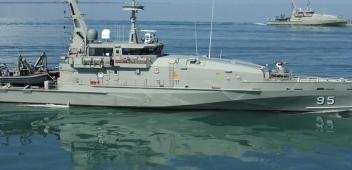Deterring at a distance: The strategic logic of AUKUS
With regional security anxieties rising, nuclear-powered submarines are the optimal deterrence machines.
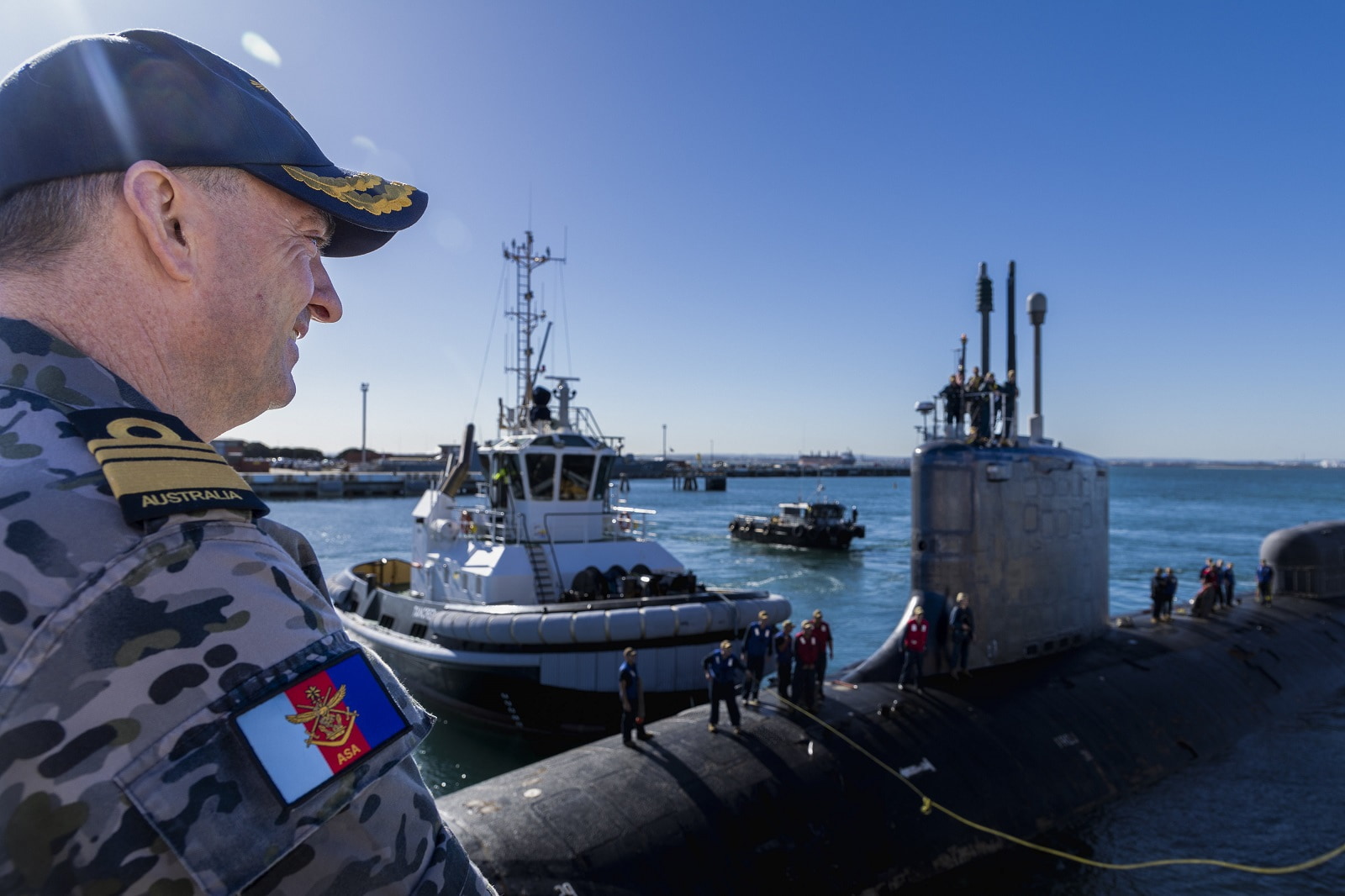
- Nuclear-powered submarines (SSNs) will be central to Australia’s defence strategy in contingencies prioritised by the Defence Strategic Review, such as defeating threats of invasion or stand-off attack, countering a naval blockade, and supporting the regional balance of power.
- SSNs will give Australia added strategic weight to deter a more powerful adversary by demonstrating the country’s capability to target forces that would otherwise outrange its own, and which could be used to coerce Australia at a distance.
- To further grow Australia’s deterrent, future governments should consider building more SSNs continuously from the 2050s.
Executive summary
As China’s massive military build-up drives rising regional security anxieties, Australia is contributing to a more favourable balance of power through AUKUS. This technology-sharing agreement with the United Kingdom and the United States will see eight nuclear-powered submarines (SSNs) in Australian service by the 2050s. SSNs are overwhelmingly in Australia’s interest because they strengthen the country’s ability to deter war by threatening painful consequences for aggression against Australia, its partners, and its interests. The 2023 Defence Strategic Review explicitly tasks the Australian Defence Force with a deterrence role against a significant military power — a relatively new mission. SSNs are optimal deterrence machines, able to accomplish the essential tasks laid out in the Review.
The purpose of AUKUS
Australia’s decision to acquire nuclear-powered submarines through the AUKUS partnership is one of the most consequential industrial endeavours the country has ever undertaken. Creating 20,000 jobs, AUKUS will see $30 billion invested in Australia’s industrial base and $18 billion in infrastructure upgrades, serving to upskill the country’s workforce and boost its shipbuilding industry for decades.
While these benefits stoke much of the excitement around AUKUS, job creation and industry policy are not the main reasons Canberra is acquiring a cutting-edge defence capability costing up to 0.15 per cent of the country’s annual GDP over 30 years. Jobs and industry growth will not in themselves determine the success or failure of AUKUS.
The main reason to acquire and build SSNs in Australia is their potent strategic effect. Their purpose is to give the Australian Defence Force (ADF) a regionally superior capability that will help it to deter war and, if it must fight a war, to win. Whether the benefits of the AUKUS plan outweigh the costs depends chiefly on whether it is the right response to the strategic risks facing Australia, what the SSNs can do militarily, and whether they will make Australia safer. On these grounds, AUKUS is the best deal on offer.
AUKUS is already on trial, and the burden of evidence is higher than for any other Australian defence project.
By acquiring SSNs, Australia will be able to enter the deterrence game in earnest because it can credibly threaten painful consequences for attempts to attack the country. Governments cannot always say this openly. Departmental releases in dry bureaucratese often gloss over the purpose and operational uses of a military capability, letting euphemisms such as “unprecedented strategic challenges” substitute for a clear explanation. Only a full-throated defence can dispel the claims of AUKUS critics that the project lacks a well-defined strategic logic. [1]
This is essential to building and sustaining public support. According to the 2024 Lowy Institute Poll, almost two-thirds of Australians (65 per cent) are “somewhat” or “strongly” in favour of acquiring SSNs. These encouraging results replicate previous years. But there are chinks in that support. One Guardian Essential poll saw support for AUKUS dip as low as 40 per cent, with opposition rising. A bare 40 per cent of Americans also agreed it was a good idea for Australia to buy SSNs. British respondents were more bullish, with 64 per cent believing AUKUS made the United Kingdom safer but split along partisan lines, with higher support among conservative voters. The same trend holds in Australia: Coalition voters are more likely than Labor voters to back AUKUS. There is also a clear generational divide. Only a third of Australians aged 18–34 think AUKUS is a good idea. [2]
This plan requires bipartisanship in three democracies over three decades.
Long-term political support cannot be taken for granted. This plan requires bipartisanship in three democracies over three decades, so if the fissures in today’s public opinion are to be arrested, AUKUS supporters cannot afford a lack of clarity about the essential purpose of the initiative. AUKUS is already on trial, and the burden of evidence is higher than for any other Australian defence project. Australians demand and deserve the utmost clarity of purpose. They need to be reassured that AUKUS is the right response to growing tensions in the Indo-Pacific.
The 2023 Defence Strategic Review (DSR) notes that “China’s military build-up is the largest and most ambitious of any country since the end of the Second World War”. Unfolding “without transparency or reassurance”, it challenges Australia’s interests in the South China Sea and the Pacific. [3] China spends more on defence than the next 25 largest regional countries combined, having raised spending by 75 per cent over the past ten years compared to an average 33 per cent rise among those countries. Even though China is the largest trading partner to Australia and more than a hundred other countries, its massive and opaque military build-up is Australia’s biggest security anxiety, and that of regional partners.
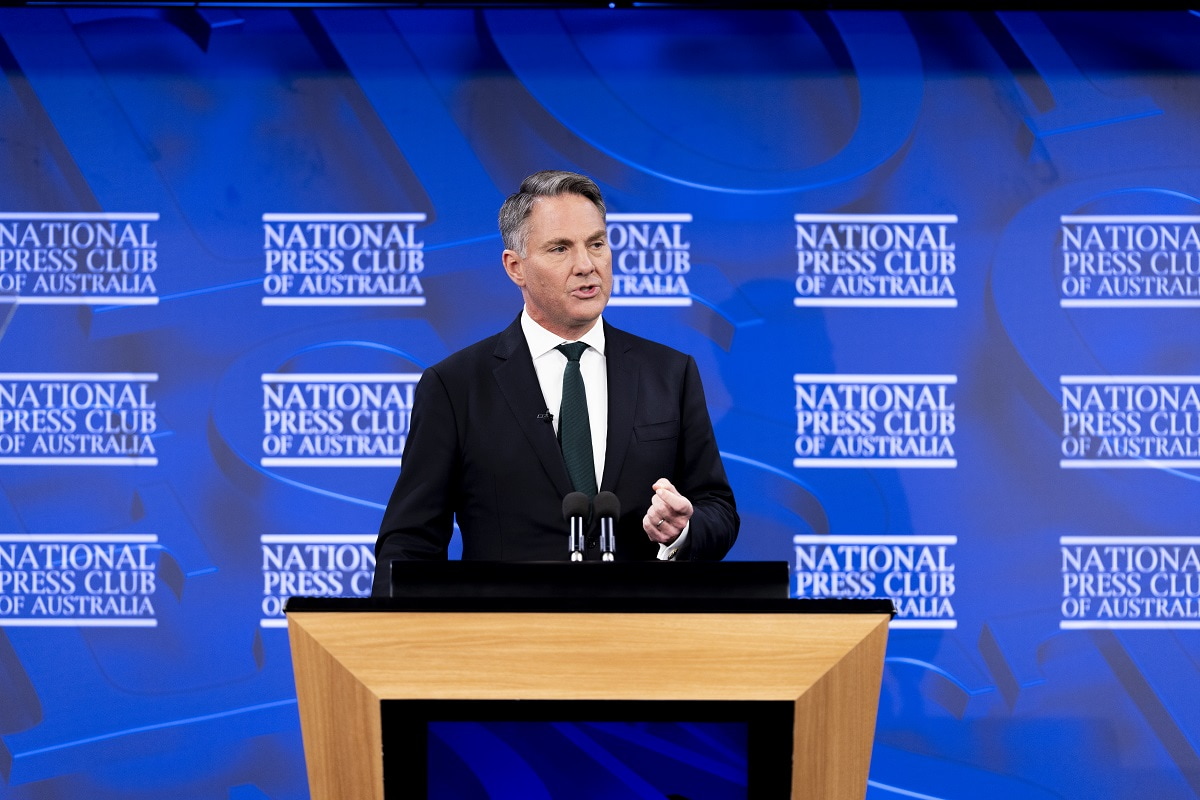
China is historically a continental power. The People’s Liberation Army Navy’s (PLAN) order of battle consisted of junks, a few frigates, and former US amphibious landing craft when Chairman of the Communist Party of China Mao Zedong decided to modernise it with Soviet assistance. “We will have not only a powerful army but also a powerful air force and a powerful navy,” he said in 1949. [4] Mao was instrumental in encouraging the PLAN to expand beyond its traditional coastal defence role in 1975, inspiring its doctrine of “active defence”. [5]
Over the decades, as China’s GDP soared from US$397 billion in 1990 to almost US$15 trillion in 2020 — more than eleven Australian economies — the PLAN’s accelerated shipbuilding leapfrogged the US Navy in raw numbers. Now armed with 370 warships, the PLAN is expected to grow to 440 by 2030, compared to the US Navy’s 294 ships. China is now the largest shipbuilder on Earth, accounting for half of all vessels built. Every four years, the Chinese navy adds 130 ships — more than three Royal Australian Navies — to its order of battle. Meanwhile, the US Navy will grow by 75 ships over the next decade, with the goal of 355 ships including 66 SSNs, down from the Reagan administration’s planned 600 ships and 100 SSNs. [6]
Numbers are not the only indicator of combat power, and the United States still surpasses China in aircraft carriers, destroyers, and SSNs, as seen in Table 1.But mass has its own eloquence. [7]
Notes: PLA (People’s Liberation Army); RAN (Royal Australian Navy).
Shaded cells represent quantitative dominance.
This kind of comparison misses important qualitative differences. For instance, US Navy ships outnumber China in the key metric of vertical-launch missile tubes, which is a good proxy for determining how much firepower a ship carries; China has 1,000 versus 9,000 for the US Navy (in one simulation, the United States fired 5,000 anti-ship missiles during the first four weeks of an engagement in East Asia [9] ). For now, the United States also maintains the edge in undersea warfare on account of its boats’ acoustic and technical superiority.
With large surface ships threatened by the dense envelope of anti-ship weapons surrounding the Chinese mainland, strategic competition has dived underwater.
But this advantage is eroding. Together with the PLA Rocket Force’s DF-26 carrier-killer missiles, upgrades to China’s submarine force have shifted the balance in anti-surface warfare. Even if, as one RAND study claims, US submarines could destroy 40 per cent of China’s landing force in a seven-day campaign against Taiwan, US carrier strike groups could face catastrophic losses operating within 2,000 kilometres of the island. In 1996, the PLAN could not even locate two US carriers operating near Taiwan. Today, these ships can no longer approach without grave risk to US military personnel. [10]
With large surface ships threatened by the dense envelope of anti-ship weapons surrounding the Chinese mainland, strategic competition has dived underwater. Initially, China’s submarine force shrank even as it became an order of magnitude more advanced and efficient. It now numbers up to 72 boats and is expected to grow to 79 or more by 2030. The United States is at around 67 submarines, but that number will contract to 46 by 2030 before reaching 69 by 2053. The United States is behind in its shipbuilding schedule, producing 1.2 submarines a year instead of the planned two, and it will take five years to get back on track. [11]
The PLAN also enjoys an advantage because its submarine force, though roughly on par with the US Navy in sheer numbers, is 100 per cent concentrated in only two oceans and more narrowly around China’s coastal waters, while America has global commitments. Some 60 per cent of its fleet, or 49 submarines, deploy to the Indo-Pacific. Few are home-ported there. Only 25 are under the command of the Pacific Fleet. And 37 per cent of American SSNs are idle or in maintenance. [12] With a smaller area of operations and shorter supply lines, China’s is the more focused force in peacetime. [13]
Note: Shaded cells represent quantitative dominance in the Indo-Pacific region.
Some might argue that it is unhelpful to fixate on the correlation of forces between the United States and China. The region is bigger than these two military giants. This is only partly true. Of the 400 non-US submarines in the world, 72 are Chinese, 86 are North Korean, and 58 are Russian. That is a total of 216 subs; 166 in Australia’s region. [15] Compare that to America’s 49 submarines in-region, along with 22 Japanese, 19 South Korean, and six Australian boats for a total of 96. That is a 53 per cent difference. The military balance grows ever more lopsided.
Why does it matter to Australia which country has more submarines in the Indo-Pacific? Does the defence of Bondi really begin in murky waters thousands of kilometres to Australia's north? And even if Australia were to get involved, would its contribution to the submarine balance not basically amount to “throwing toothpicks at a mountain”, to quote Paul Keating’s assessment of AUKUS? [16] The coherence of AUKUS as a plan depends in large part on the answers to these questions.
The undersea balance of power matters immensely to Australia insofar as it is a function of the broader military balance that so heavily conditions Australia’s freedom of action in ways large and small. Take a case of which Australians can be rightly proud: the ADF’s intervention in Timor-Leste in 1999 to support its transition to independence. Transferring troops a short hop from my home of Darwin was not without dangers, but the submarine threat was much more benign than it is today. It is an open question whether, in a similar crisis, the ADF could again risk putting a thousand troops on HMAS Canberra without adequate submarine escort, so high priority a target would it present.
If the ADF proved unable to operate as close to home as it did in Timor-Leste or during the Regional Assistance Mission to Solomon Islands in 2003 without a real risk of its transport ships being sunk, it is doubtful that a Royal Australian Navy hemmed into the country’s landmass by a submarine threat could again keep the peace in more distant theatres. Or for that matter, defend objectives that could seem more abstract, such as securing Australia’s sea lines of communication, enforcing UN sanctions, or transiting a chokepoint stalked by enemy submarines in archipelagic Southeast Asia to support an ally in need.
The undersea balance determines Australia's psychological freedom.
Australia’s freedom of movement would be the first casualty of unrestricted submarine warfare, as happened in the Atlantic and the Pacific during the Second World War. But it would be wrong to think of this threat only in terms of the damage it could inflict on Australia’s navy in wartime. In some ways, the bigger risk is that this hypothetical threat deters Australia today from even contemplating the sorts of actions it would consider to be in the national interest, such as the International Force East Timor mission. The undersea balance determines Australia’s psychological freedom.
In a regional war, the balance would shift in America’s favour as its forces flowed into Australia’s part of the world from other combatant commands in and outside the continental United States within days. Since 1917, no country or armed group has been able to withstand the combined military and industrial might of the United States when it can concentrate its forces on one point on the map at the decisive moment. America would also prevail in an Indo-Pacific contingency under those conditions. Having learned this lesson, an aggressor would feel a pressing need to prevent the United States from staging forces on its own or allied territory in Japan, South Korea, the Philippines, Australia, Guam, and Pearl Harbour. It would likely order its submarines to try to stop American sea power from focusing its operations.
Crucially, then, the submarine balance could also constrain America’s ability to project power across the Pacific to fend off an attack on Australia. There is no doubting America’s iron-clad commitment to Australia’s defence and vice versa, as Australia proved by invoking the ANZUS Treaty for the first and only time after the 9/11 terrorist attacks. But a hostile submarine force might seek to slow or stop US forces from reinforcing Australia on time. If America were tied up fighting to break through to Australia, or pinned down elsewhere in a wider war, the ADF could have little choice but to carry out its operations independently for a period of months or longer while waiting to link up with the United States. [17] In another scenario, these same submarines could cordon off Australia to block its assistance to the United States.
In a real sense, then, the defence of Bondi does begin in the archipelagos to Australia’s north and islands to its east. The freedom all Australians take for granted is entirely dependent on the freedom of the Australian state, one determined by that same balance of power becoming less favourable to Australia’s interests with each passing year. That is why freedom of navigation for Australia’s trade, ships, and people is not a right that can be safely negotiated away without life changing for the worse for all Australians.
While Australia cannot put all the responsibility on submarines to uphold these freedoms, submarines have a special role in securing them as optimal instruments of deterrence, a strategy at the core of AUKUS.
The role of AUKUS in Australia’s deterrence strategy
Elevated to a military science during the Cold War, deterrence is a relatively new task for the ADF. Traditionally, other than as part of coalition operations, Australia’s armed forces lacked the mass, range, lethality, and ability to project force to deter a significant military power. But the Defence Strategic Review recommended tasking the ADF with a deterrent role without specifying the “higher threat levels” to be deterred. [18]
Thomas C. Schelling, one of the leading thinkers on deterrence, defined it in Arms and Influence as being “about intentions — not just estimating enemy intentions but influencing them”, which he called the “hardest part”. [19] For Schelling, deterrence is like a language whose syllables are our armed forces and whose words are the strategic signals sent by those forces, which an adversary must interpret accurately for the deterrent to work.
The signalling of a credible “if x, then y” statement, in the hope that threatening x ensures y action never has to be taken, is the essence of deterrence. Washington’s deployment of two aircraft carrier strike groups to the Eastern Mediterranean in late 2023 was a textbook deterrent message to any external actor contemplating intervening in the Israel–Hamas war: “Don’t, or else.” A deterrent is President Teddy Roosevelt’s big stick, the iron fist in the velvet glove, the implied threat in invisible ink in a foreign ministry’s note verbale blandly urging an adversary to exercise restraint.
Deterrence is chiefly a psychological act, an attempt to persuade with the barrel of a gun. To succeed, Australia’s declaratory policy must be finely calibrated to reflect the country’s will and ability to fight, precisely outlining the behaviours it is trying to deter; say, an expansionist land grab in Southeast Asia. And, as history warns, deterrent messages must always be backed by credible threats.
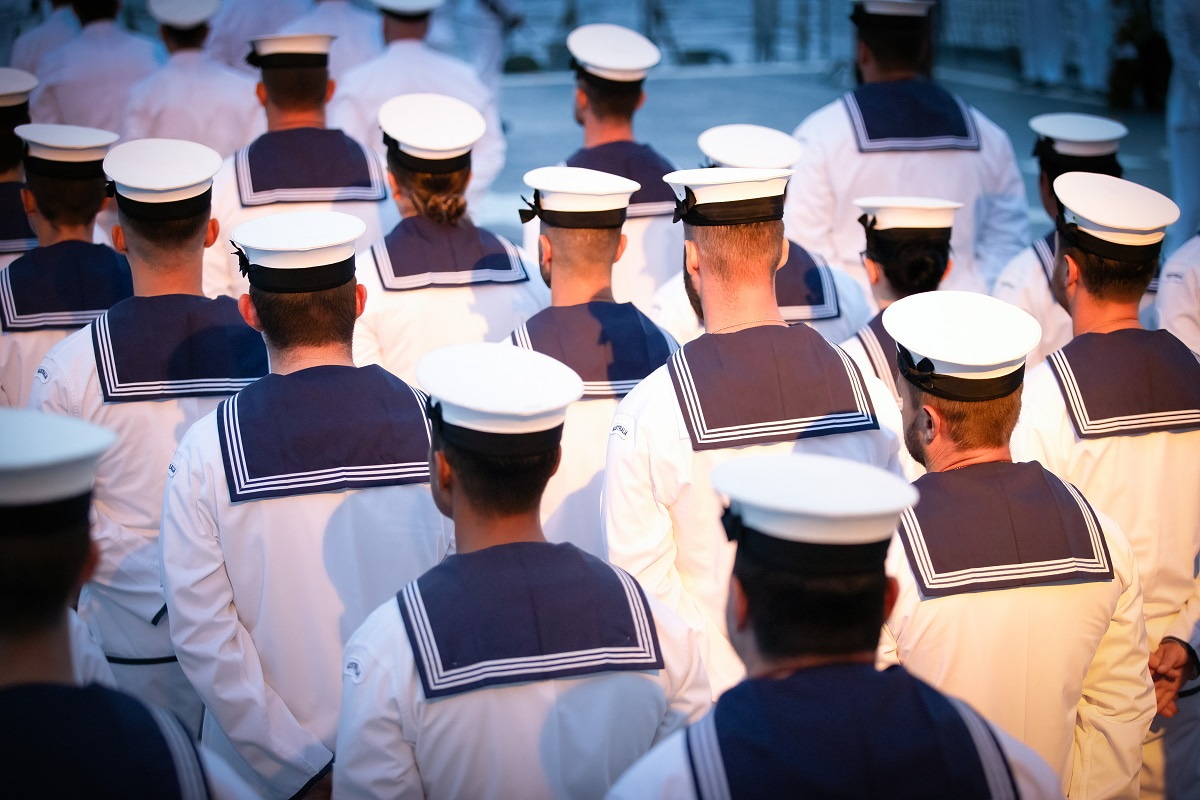
Australia should studiously refrain from issuing hollow threats it does not have the stomach and capacity to act on, lest it shatter the credibility of the country’s future threats and sound as British Prime Minister Neville Chamberlain did on 31 March 1939 when, haunted by the ghosts of Czechoslovakia and Austria, he made what Hitler interpreted as a panicked and unenforceable vow to defend Poland. Far from deterring the dictator, Chamberlain’s words were “the precipitating cause” of his invasion. [20] Nazi Germany was immune to British and French deterrence signals not because Germany was undeterrable, but because Hitler accurately dismissed the threat of an allied offensive across the Siegfried Line or Belgium as a bluff.
Just as an uncredited threat only advertises its own bankruptcy, so a poorly communicated threat can invite dangerous misperception, even if it is backed by real capability and intent. Thucydides’ history of the 5th century BC Peloponnesian War offers a classic example of how a failure of deterrence unleashed one of the most cataclysmic wars of antiquity. At the height of the crisis, a vaguely worded Spartan ultimatum fatally underplayed that continental juggernaut’s unshakeable will to go to war. The Spartan king Archidamus II’s credible threat to go to war was tragically garbled and misunderstood as an assertion that the Spartans were too weak to fight a naval war, causing the Athenian leader Pericles to underestimate his adversary’s resolve. [21] In fact, the Spartans did go to war and won by destroying the Athenian fleet.
The lessons for Australia’s own deterrence efforts are enduring. Chief among them is that to credibly deter adversaries, Australia must impress on them both its capability and intent to “act to meet the common danger”, as the ANZUS Treaty quaintly puts it. Britain failed the first test, the Spartans the second. And what that means, as uncomfortable as it may seem, is that Australia must be willing to threaten and win the war it earnestly hopes to prevent. AUKUS gives Australia the capability to make the targets of its deterrence campaign take the signals seriously, while it is the task of a broader Australian statecraft effort to ensure that its deterrent message — the “or else” — is believed.
Even as it seeks to reshape an adversary’s assessment of the probability of success, the high-wire act of deterrence must not intentionally provoke conflict. Schelling explains:
Deterrence involves setting the stage — by announcement, by rigging the trip-wire, by incurring the obligation — and waiting. The overt act is up to the opponent. The stage-setting can often be nonintrusive, nonhostile, nonprovocative … the deterrent threat only changes the consequences if the act in question — the one to be deterred — is then taken. [22]
Since Australia lacks the United States’ formidable military capabilities and the capacity to project them across oceans, Canberra’s deterrent language will lack much of the range and resonance of Cold War-era practice. This means that the red lines Australia draws and guards with deterrent threats will have to be defined exceedingly cautiously. Building an independent Australian deterrent — a sovereign line of effort separate from its crucial joint deterrence measures with the United States — will demand that Canberra be more clear-headed and disciplined than it has ever been in prioritising the country’s military strategy.
Critics make a fair point that a meaningful discussion of how an Australian deterrence strategy might work needs to spell out exactly who is being deterred from doing what. In an operational headquarters, defence planners need a very clear idea of who the enemy is, how they think, and what they must be deterred from doing. But the strategic analysis that informs capability acquisition does not work exactly like that. Focusing too much on one contingency can blind the planner to strategic surprise.
Given the long timescale of the AUKUS project, an Australian doctrine of deterrence cannot assume a fixed, inter-generational threat as American planners could from the time of George Kennan’s Long Telegram in 1946 to the crumbling of the Berlin Wall. Leaders come and go. Economies boom and bust. Governments rise and fall. Strategic tensions wax and wane. By the time Australia operates its full fleet of nuclear-powered submarines, their first war-time deployment may be in circumstances completely unthinkable today.
That is why critics of AUKUS take the bait of foreign propagandists when they assume that it targets one specific country — call it “Musoria”, like I did alongside generations of Australian soldiers fighting that fictitious enemy out bush — in answer to one contingency. It simply does not. SSNs are a country-agnostic capability that can respond along a broad spectrum of contingencies ranging from great-power war to insidious grey-zone threats. Australia has no fixed enemies, only permanent interests. While military planning must be granular and enemy-specific, the overarching strategy of deterrence needs the flexibility to adapt to multiple shooters.
The Defence Strategic Review sketched the outlines of such a strategy. And in each scenario it laid out, the submarine reigns supreme. When effectively maintained and properly crewed, submarines are optimal deterrence machines able to accomplish the tasks laid out in the Review. Operating undetected at sea for long periods and holding distant targets at risk, they can strike first or in retaliation, making them the ideal asymmetric weapon. Like David’s slingshot, submarines are “a weapon of choice for the weak to deter the strong”. [23] And just as the mechanical crossbow surpassed the slingshot, so a nuclear-powered submarine can reach further and strike harder than a conventional boat.
SSNs are a country-agnostic capability that can respond along a broad spectrum of contingencies ranging from great-power war to insidious grey-zone threats.
Except for the shallow Arafura Sea, the air-sea gap around the Australian landmass is a submarine commander’s paradise, offering a natural advantage for deterring a lodgement on Australia’s territory. In that scenario, Australian SSNs would frustrate the enemy’s operational plans at two junctures.
In the planning phase, Australia’s SSNs would cultivate uncertainty in an enemy’s war cabinet and among its tactical commanders. They could be anywhere when a surface action group sails for Australia. Maybe lurking outside the Sunda, Lombok, and Ombai straits, which enemy ships and submarines would need to pass through. Or patrolling deeper waters further north, ready to strike from anywhere, even from the rear. Granted, Australia’s few deployable submarines could not be everywhere at once in such a vast area of operations. But faced with a potentially devastating attack on their most highly prized assets, all but the most adventurous invader might be given pause for thought. This is what AUKUS is all about.
If an undeterred enemy fleet still staged in Australia’s northern approaches for an invasion or long-distance strikes on the mainland, Australia’s fleet of eight SSNs, at least two of which would be on station at any time, would focus on hunting those submarines, surface combatants, and transport ships attempting the perilous crossing. In a war game modelling a similar amphibious assault, 50 American submarines destroyed 64 enemy ships. The attacker lost 90 per cent of its transport fleet in the high-intensity war. [24] With only two SSNs, the cost Australia could impose would be much lower. But even factoring in transit times to the closest Australian port to reload, its SSNs could do crippling damage to an invading force if Australia put the enemy’s highest-value platforms at the top of its targeting list.
A second role in which submarines have pride of place lies in what the DSR calls “deterrence by denial”. That means not only frustrating an enemy’s ability to subjugate Australia through outright invasion, but also resisting their capacity to browbeat Australia into changing its policies with the threat of strikes launched from beyond the range of Australia’s defences. This is a more likely scenario than outright invasion, and submarines are a critical tool for ensuring that it never happens.
But they are not the only solution. On land, missiles fired from High Mobility Artillery Rocket Systems (HIMARS) launchers will strike out to 500 kilometres. In the air, the Long Range Anti-Ship Missile (LRASM) and Joint Air-to-Surface Standoff Missile – Extended Range (JASSM-ER) missiles will reach targets out to 500 kilometres and 1000 kilometres, respectively (launched from F-35As with a combat range of 2200 kilometres). At sea, Naval Strike Missiles (with a range of 185 kilometres) and Tomahawk cruise missiles (1500 kilometres) fitted on six Anzac-class frigates and three Hobart-class destroyers will extend the ADF’s maritime and land strike capabilities. The formidable reach of the SSNs will expand Australia’s defences still further.
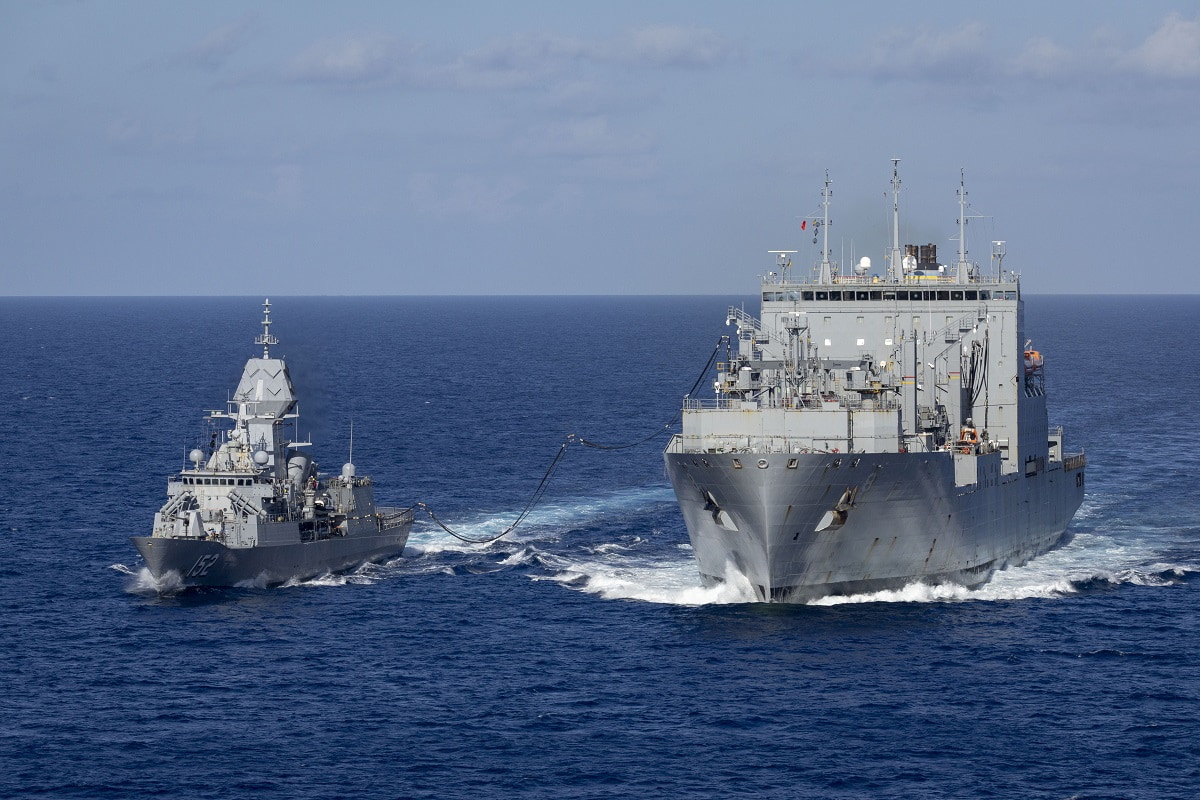
Together, these systems can create a bubble that will give adversaries the certainty that Australia has the means to destroy their launchers on the tarmac, bombers mid-flight, and ships at sea. Without this reach, Australia is powerless to affect their strategic calculus, hostage to the whims of some latter-day Pericles.
If Australians woke to find a hostile power having achieved what has not happened since Japan ruled most of the region, threatening to isolate Australia strategically with one or more bases, Canberra would have few good options. Pre-emptively striking a military base in peacetime would risk Australia looking like the aggressor. Yet if such a base posed an imminent threat to Australia in wartime, SSNs could play a crucial role either with Tomahawk missile strikes or by infiltrating special forces to raid the base.
Although Australia’s SSNs theoretically could reach an adversary’s homeland, it would not need to conduct such strikes to stop them from targeting Australia. Australia’s targets would be enemy forces postured to attack along the archipelagos and islands scattered all around the Australian landmass to its north and east, each a potential lily pad for an aggressor. Even though Australia’s SSNs would be able to bottle enemy forces at port, deterring further upstream, as Chamberlain’s guarantee to Poland reminds us, this is not a threat Australia can make without being sure it would carry it out.
Nuclear-powered submarines would be extremely useful in a third nightmare that has haunted generations of Australian defence planners, that of a hostile naval power seeking to close Australia’s sea lines of communications (SLOCs) to coerce the country.
The crudest but most devastating way for an enemy to achieve that goal would be via a blockade on commercial tanker traffic from Australian ports to those in the region. A blockade could be imposed by coast guard vessels and backed by warships and submarines — to deter ADF intervention — and may include mining Australia’s ports. Naval blockades helped defeat Napoleon in 1815, and Germany and Japan in 1945, and would constitute an act of aggression on Australia’s economic lifeline that would be “existential”. [25] Australia’s SSNs could be tasked with protecting civilian ships to run the blockade or targeting submarines and warships enforcing it. In peacetime, long-range SSN patrols demonstrating Australia’s ability to defeat a blockade are the surest deterrent against one.
Exactly how to strengthen one’s side of a balance of power, one that is only ever tested in war, is a central problem of deterrence.
The fourth scenario in which submarines are of paramount importance is in shoring up a balance of power that preserves peace in the Indo-Pacific, an explicit goal of Australia’s foreign policy.
Australia is committed to preventing the region from falling under the sway of a hegemonic power or coercive rule by contributing to a coalition — with the United States an indispensable player — that resists attempts to shape a regional order inimical to Australia’s values and interests. That is what the DSR means when it declares that “The defence of Australia lies in the collective security of the Indo-Pacific.” [26] This is a striking deterrent message usually associated with alliances such as the North Atlantic Treaty Organization.
Exactly how to strengthen one’s side of a balance of power, one that is only ever tested in war, is a central problem of deterrence. Australia’s contribution to the regional balance should aim to deter an adversary from a unilateral fait accompli such as invading a weaker neighbour. Towards that end, SSN escorts of Royal Australian Navy (RAN) task group deployments and submarine patrols with partners can signal readiness, subject to a sovereign government decision, to support an Indo-Pacific partner against unprovoked aggression, deterring war by threatening credible consequences for it, just as Australia would hope for a collective regional response if it were ever under attack.
SSNs also contribute to deterrence in softer and more indirect ways, such as to support the law of the sea, which is foundational to Australia’s ability to undertake deterrence and war-time missions. Abiding by the 1982 UN Convention on the Law of the Sea rules on the navigational rights of innocent and transit passage will enable AUKUS boats to sail through Indonesia, Papua New Guinea, and the Philippines in full confidence that they are acting lawfully. To assert this right, Australia has undertaken freedom of navigation and overflight patrols over the South China Sea, including with Royal Australian Air Force (RAAF) AP-3C Orion flights. HMAS Anzac, HMAS Toowoomba, and HMAS Success all undertook freedom of navigation patrols in the South China Sea in April 2018, with other RAN ships sailing as far as the Taiwan Strait in 2001, on both occasions being challenged by PLAN vessels. [27] Australian SSNs will have the range to carry out freedom of navigation patrols independently or alongside warships.
The risks of the AUKUS pathway
SSNs are central to the DSR’s ambitious vision of denying an adversary’s access to Australia’s direct approaches and denying them free movement within that area. With almost unlimited range and armed with Tomahawk missiles that can hit targets 1500 kilometres away, AUKUS submarines will be the “apex predators of the oceans”. [28] Fast, concealed, silent, and highly survivable, they will be the ultimate deterrent, other than the nuclear umbrella provided by the US alliance. Their purpose is to deter an adversary from considering attacking Australia, to strike from any direction while an enemy is staged to attack, and to strike back from the sea if an enemy has hit Australian forces, bases, and cities.
Aside from advantages in range and firepower, it is the stoic independence of the SSN that makes it such a qualitative leap from the Collins-class submarines, which must surface every three days to recharge their batteries, telegraphing their position to an enemy. SSNs are also less discoverable because, after discharging their weapons, they can vacate the area faster. They are less predictable because they do not need to return to port regularly to refuel, and they are only limited by crew endurance and food supplies. The Collins are great boats, but there is no comparison. “There is no nation or system that can prevent a determined attack by a nuclear submarine,” concludes retired Rear Admiral David Oliver, who operated both diesel and nuclear boats. [29]
The claim that AUKUS secretly commits Australia to joining a future war in Taiwan is false.
Still, even where operational considerations favour SSNs over buying or building more conventional boats, legitimate questions persist about the political and technical feasibility of the AUKUS plan.
A common argument against AUKUS is that it reflects a tacit quid pro quo with America, signing Australia up to support it in any effort to defend Taiwan against China. Former prime minister Paul Keating framed AUKUS as an effort to support US containment of China. Former foreign minister Bob Carr depicted the deal as “signing up to a war over Taiwan”, as did former Liberal opposition leader John Hewson. For former prime minister Malcolm Turnbull, AUKUS “subordinated” Australia’s sovereignty to America.
But does AUKUS really give Australia “little choice” but to follow America to war, as John Mearsheimer, a leading political scientist from the University of Chicago, has argued? [30]
The claim that AUKUS secretly commits Australia to joining a future war in Taiwan is false. The truth, confirmed on the record by Deputy Prime Minister Richard Marles, is that the United States never sought and Australia has never provided a Taiwan commitment in exchange for AUKUS. [31] The deployment of Australia’s SSNs would be up to the government of the day. This capability will in no way force Australia to sign up to any future war, which remains a sovereign decision.
But would not Washington be confident that the Virginia-class submarines, which it must take out of the American order of battle to transfer to Australia, thus degrading an already squeezed US Navy’s capability until as late as 2052, will be available to them in an Indo-Pacific war? [32] This view does have supporters in Washington. Under one proposal, AUKUS could be tweaked such that, instead of selling Australia submarines, American SSNs could undertake Australian missions. [33] This departure from the AUKUS optimal pathway would have serious implications for Australia, potentially opening the whole agreement up to debate going all the way back to first principles. Such a proposal should never be entertained by Australia, which must maintain a sovereign submarine capability.
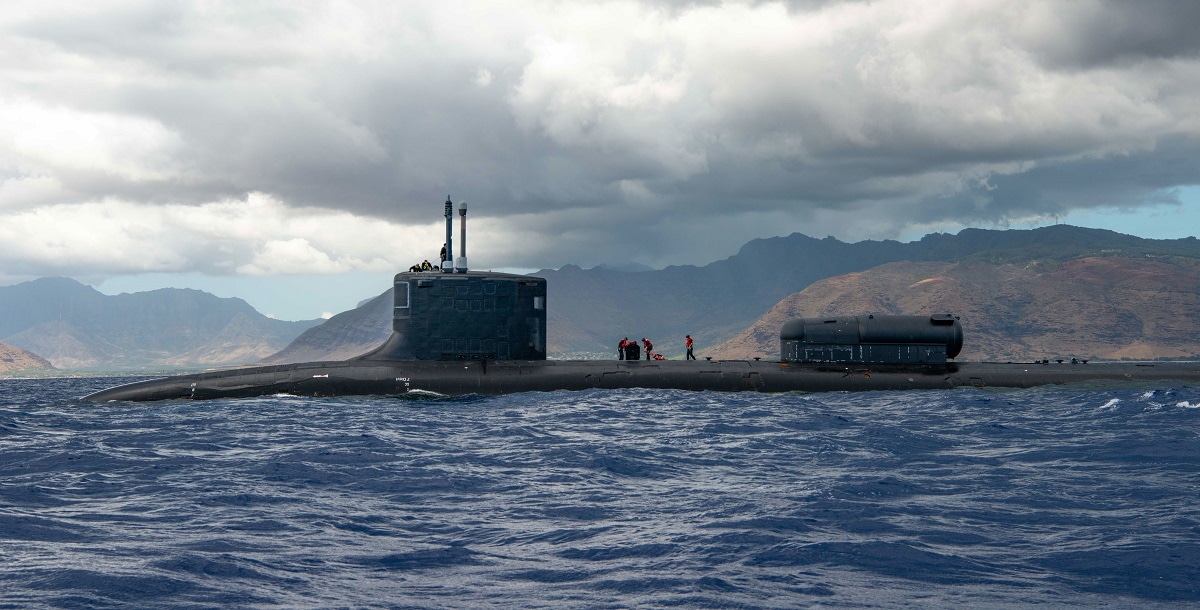
Some argue that America’s AUKUS legislation will give the United States sway over Australian sovereign choices. An early draft of the 2024 National Defense Authorization Act specified that a US president must certify that these submarines “shall be used to support the joint security interests and military operations of the United States and Australia”. [34] But the “joint” requirement was softened in the final draft to ensuring the sale did not degrade US undersea capabilities and was consistent with US foreign policy interests. [35] America is perfectly entitled to assess its own interests in the Virginia sale even as Australia has a clearly stated policy that they will unambiguously be a sovereign capability.
A better question is not whether AUKUS submarines pre-commit Australia to war in Taiwan under pressure from Washington, but whether having the ability to project force as far as Formosa will increase Australian decision-makers’ temptation to use it in Australia’s own national interest. This is a subtly different problem, going to Australia’s self-restraint in how it marshals the threat of force. When considering deploying SSNs to a sea dominated by another navy, Australia must carefully analyse whether such a move serves its interests, independently of alliance considerations. It is easy to foresee a scenario in which Australia’s newfound strength injected a fatal hubris into its calculus.
American politics are often held up as another potential showstopper for AUKUS. Some analysts worry about the possibility that a second Trump presidency could imperil the project. But my most recent visit to the United States gave me confidence in the bipartisan support for AUKUS in Congress. Because it is in the overriding interest of the United States to bolster Australia’s contribution to Indo-Pacific deterrence, this consensus is strong enough to weather any change of government. Though Australian observers often frame US processes as determining AUKUS’s pace, Canberra will need to demonstrate progress against its own defence spending, basing infrastructure, defence export controls, and nuclear waste disposal plans to give Washington confidence in Australia’s ability to operate and sustain SSNs.
It is easy to foresee a scenario in which Australia’s newfound strength injected a fatal hubris into its calculus.
Some argue that AUKUS will increase the ADF’s threat profile because a regional rival of the United States would perceive Australia’s SSNs as a threat to their security, whatever Australia may say about it. In other words, AUKUS makes Australia a bigger target. The Lowy Institute's international security expert Sam Roggeveen has argued that nuclear-powered submarines are inherently more threatening since they can hem in an adversary’s navy in home waters, operating much further from Australia’s shores for 77 days rather than the Collins’ eleven days, putting at risk their ships, submarines, ports, even landmass. [36] Why would Australia risk antagonising any country that, in a crisis, would be capable of hitting harder than Australia could hit back?
This possibility cannot be dismissed out of hand but must be seen as part of a wider cost-benefit analysis whose payoff is effective deterrence. Being able to hold an adversary at bay with SSNs carries risks, but these are worth it if they deter acts of aggression that can lead to regional war. The potency of this capability, and the risk Australia takes in signalling its readiness to use it, is exactly what gives it its deterrent power. But to call AUKUS escalatory is to flatter it too much. Ultimately, Australia is seeking to restore equilibrium, alleviating its worsening strategic position. Australia is a status quo power, not a revisionist one.
When strategists and politicians say Australia faces its most dangerous strategic circumstances since the Second World War, they mean it faces the possibility of war not just in the distant 2050s but this decade.
I understand the fears that AUKUS has a great many points of failure. An ambitious number of overlapping processes need to work seamlessly for it to succeed. The plan is to first host one UK and up to four US nuclear-powered submarines at HMAS Stirling in Western Australia by 2027. For eight boats to be seaworthy by the 2050s, each of the AUKUS countries will need to solve pressing workforce challenges today. Congress needs to approve the sale of up to five Virginias to Australia in the 2030s to avoid an ADF capability gap. UK shipyards will have to deliver the first SSN-AUKUS boats concurrently, followed by Adelaide’s Osborne shipyard building its first SSN in the early 2040s.
AUKUS should not end there. After the Virginias enter service, it would make little industrial and strategic sense to have set up an entire Australian production line to build three boats over ten years. A future Australian government should seriously consider building SSNs continuously from the 2050s, possibly of an evolved design. Beyond avoiding a shipbuilding “valley of death” and locking in economies of scale, the advantage of maintaining a sovereign SSN capability indefinitely cannot be overstated, particularly in wartime, when parts will be at a premium. How many should Australia acquire in total? A force of twelve SSNs, with six stationed on each coast, would give Australia a credible two-ocean submarine force. [37] Two deployable boats in each ocean could protect all the key northern chokepoints at any one time, doubling Australia’s patrol coverage. This difference could well be decisive in a battle for Australia.
Even if everything in this plan does work out, will the submarines not come too late to make a practical difference in a crisis that could occur any day? When strategists and politicians say Australia faces its most dangerous strategic circumstances since the Second World War, they mean it faces the possibility of war not just in the distant 2050s but this decade. And if that is true, would Australia not rather have Professor Hugh White’s suggested 24–36 conventional submarines, former prime minister Tony Abbott’s 10 Japanese boats, former prime minister Malcolm Turnbull’s 12 French boats, or 20 “son of Collins” boats sooner than the planned 8 nuclear-powered submarines? [38]
But those are not live options. The French deal was canned in part because there was too great a risk of those submarines being obsolete on delivery. AUKUS promises to deliver the regionally superior Virginias at the same time as the French submarines would have entered service, in the 2030s. If the ADF intervened in a crisis before the 2050s, it would field a mix of extended Collins, Virginias, and possibly AUKUS boats. Maintaining two to three separate submarine supply chains will be an ongoing operational challenge until Australia has fully transitioned to an all-SSN force by mid-century.
A potentially more fatal concern is that AUKUS may be gambling on the wrong horse, betting on big, costly platforms such as those which the Ukrainian armed forces are sending to their watery graves in the Black Sea with cruise missiles and cheap naval drones. Are not the Moskva, the Caesar Kunikov, the submarine Rostov-na-Donu, and 22 other Russian vessels a slam-dunk argument against AUKUS? Instead of investing in a few high-tech weapons produced at exorbitant expense over decades, should Australia not be buying tens of thousands of cheap unmanned underwater vehicles, plus thousands of missiles?
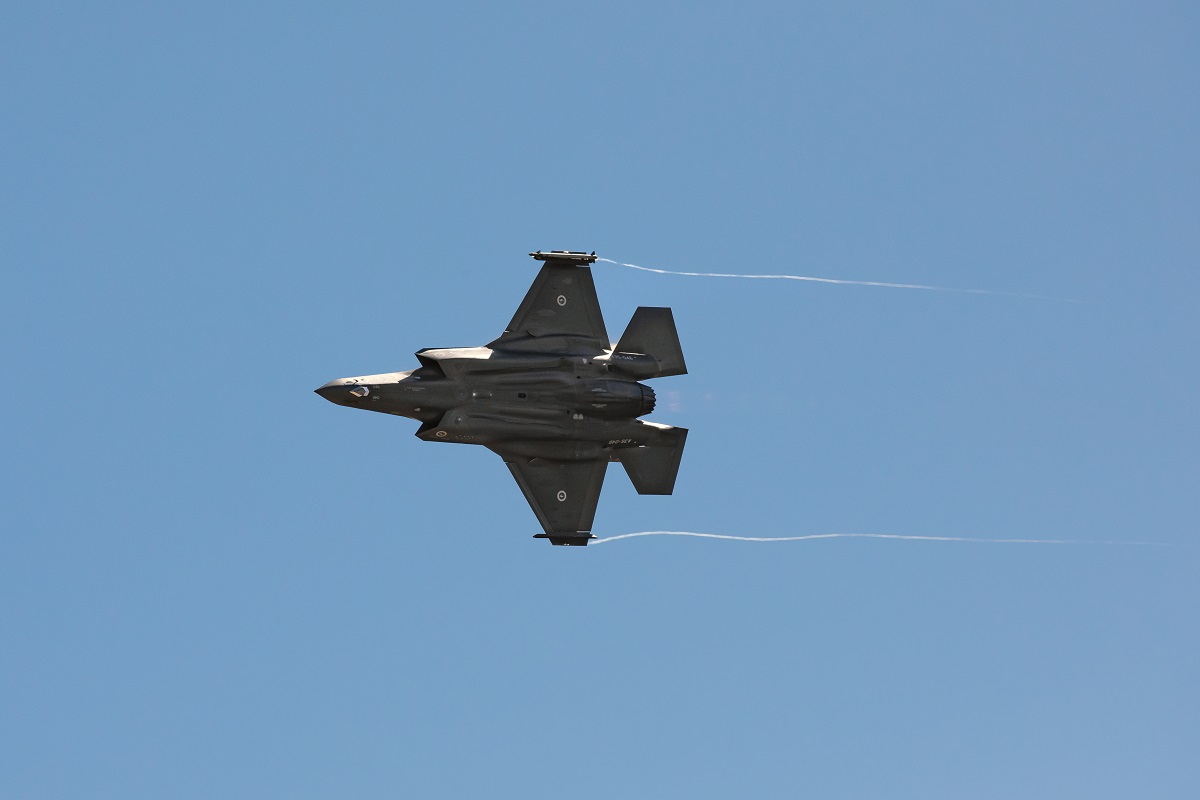
The logic is alluring. Who does not want a quick fix and savings running into the billions of dollars? But the Battle of the Black Sea is not a workable model for the defence of Australia. The Western-supplied Storm Shadow and Harpoon missiles used by the Ukrainians have a range of up to 550 kilometres, reaching not far beyond Melville Island from RAAF Base Tindal. With a range of 833 kilometres, Ukraine’s naval drones would only give Australia coverage of parts of the Timor and Arafura seas from Darwin and barely halfway to New Zealand from Sydney. The Ukrainians are striking at that range because they have no choice. If they were armed with SSNs or even Collins boats, Ukraine may have sunk the rest of the Black Sea Fleet, on top of the spectacular achievement of destroying one-fifth of it so far.
Unless proponents of this radical form of asymmetric warfare suggest shrinking Australia’s defensive perimeter to fight at the gates of its capitals, it makes no sense to retrench Australia’s forces when enemy fires outrange them. Better to strike the enemy from as far away as possible — for which SSNs are essential. The real choice is not between submarines and drones. Australia must choose both, and has done so. Crewed-uncrewed teaming is the future of undersea warfare, as seen in the RAN’s investment in unmanned underwater vehicles such as the Ghost Shark, which could be launched from and recovered by Australia’s SSNs.
Nor is the overhyped claim that advances in artificial intelligence (AI) and sensor technology will render the oceans transparent, making submarines obsolescent, a sound reason to dissolve Australia’s force. It would be negligent of any Australian government to put blind faith in the still debated theory that the veil of the ocean is about to be lifted. And it would be shortsighted not to see that AUKUS Pillar II — which focuses on joint development of AI, drone warfare, quantum computing, hypersonic weapons, and other exotic technologies — is a promising avenue for counter-measures to the technological advances that may put the stealth of Australia’s SSNs at risk.
Reports of the death of submarines are premature. Dozens of countries continue to operate them, and every nuclear-weapon state except Pakistan regards nuclear-armed submarines as a survivable deterrent. Without conventionally armed SSNs, Australia will have a stunted ability to deter rivals at distances of thousands of kilometres.
The real choice is not between submarines and drones. Australia must choose both, and has done so.
B-21 bombers might have given Australia that capability too. This option was discussed in the DSR. But their formidable intercontinental range would make most sense for striking an enemy’s homeland — the ADF is explicitly not getting into that business. B-21s are the best solution to a problem Australia does not need to solve: bombing an enemy into submission. Swift and survivable, they could also be used to destroy an enemy fleet in Australia’s northern approaches. [39] If their cost — $81 billion for 12 — were justifiable, acquiring them for this limited mission would significantly increase Australia’s deterrent.
Which takes us to the ultimate argument against AUKUS: the opportunity cost. It is undeniably true that, for the cost of eight SSNs, Australia could buy fifty B-21s, seventy Hunter-class frigates, [40] a thousand more F-35s, or could divert that money into any pressing domestic portfolio. The price tag is a real challenge that defenders of AUKUS will need to convincingly justify for decades.
The cost of AUKUS is warranted because, on first principles, Australia needs a submarine force for its ability to deter and defeat an enemy invasion and to stealthily strike distant targets, which SSNs can just do better. Threatening to aggressors, lethal if provoked, but not overtly provocative, SSNs are the goldilocks long-distance capability. There is no peer platform that achieves that military effect more cheaply, aside from Australia’s outdated conventional boats that will reach their expiry date in a decade.
Threatening to aggressors, lethal if provoked, but not overtly provocative, SSNs are the goldilocks long-distance capability.
AUKUS is not only affordable, it is already partly budgeted. The Albanese government has begun to fund SSNs by investing $9 billion over the forward estimates and a projected $58 billion until 2033, $24 billion of that offset by not buying French submarines. AUKUS will cost less than ten per cent of the defence budget. [41] The argument that it is gutting funding from the rest of the ADF is spurious. To pay for SSNs, the government earmarked $30.5 billion in additional spending in the last budget. This puts defence spending on a pathway to 2.4 per cent of GDP by the 2030s, up from 2.04 per cent last year and higher than the previous government’s 2.1 per cent target. New money is funding SSNs just as the government is investing $11.1 billion in doubling the surface fleet to 26 warships.
Where that money comes from is a crucial question that goes to the core of AUKUS’s social licence. In the guns-and-butter trade-off faced by any government, critics can cut through with cheap political slogans simplifying complex strategic debates down to what you could buy instead of one AUKUS boat. Prudent governments have a duty to balance funding for Australia’s National Disability Insurance Scheme, fee-free TAFE, cheaper medicine and childcare, social housing, and power bill relief with adequate spending on the defence of its Commonwealth — on which every progressive policy depends. Defence is as much a left-wing as a right-wing issue, as bipartisan support for AUKUS proves. The cost of AUKUS reflects the value all Australians should place on their way of life as a free people under the Southern Cross.
Conclusion
The real choice Australia faces is not between AUKUS and a fictional other submarine or futuristic autonomous drone swarms, but between the success of the AUKUS plan and its failure. Failure would set back Australia’s acquisition of a Collins replacement; expose Australia to a capability gap possibly as glaring as during the Second World War, when its navy did not operate a single submarine; and critically wound if not kill Australia’s ambition to ever acquire nuclear-powered submarines.
AUKUS is Australia’s very own moonshot. A Virginia-class is a beast the weight of 20 A380 passenger jets, made up of 5 million discrete components, requiring 100,000 skilled workers and more than 4000 suppliers to build over 9 million labour hours, leaving aside the complexity of operating and safely disposing of a nuclear reactor. And Australia wants eight like them. There is no denying the risks.
But the risks are only one side of an equation in which I also see huge opportunity, not just in the secure, well-paying jobs to be created, the upskilling of Australia’s industry, and the technological boon for the country’s armed forces, but in the greater security the SSNs will deliver for all Australians. It is a tragedy that to deter violence, Australia must make itself into a bigger threat to deter aggressors, limiting their freedom of action in order to safeguard its own. But Australia must. And there are no better means of doing that than the SSNs Australia will get under the AUKUS deal.
The views expressed in this paper do not necessarily represent those of the Australian government or the Lowy Institute.
